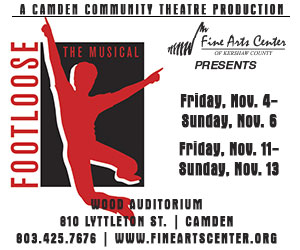Jasper is not afraid to admit that he has a bit of an addictive personality. He gets a little taste of something and has trouble letting go. Sometimes it’s a yummy bourbon — Woodford Reserve has his attention these days — and other times it’s a great choreographer or director. (Case in point — our recent post on David Mamet.)
Lately we’ve been almost overcome by our hunger for the writing of Mr. Ron Rash. One of our own, Rash was born in Chester, SC and raised in Boiling Springs, NC. He Went to Gardner-Webb University and then to Clemson, and now he serves as the Parris Distinguished Professor of Appalachian Culture at Western Carolina University in Cullowhee, NC.
Although we had read many of Mr. Rash’s short stories in the past — actually, one of our short stories was included alongside one of Mr. Rash’s in a 2001 anthology (Inheritance, edited by Janette Turner Hospital and published by Hub City Press) — we hadn’t picked up any of his novels until this summer. Serena changed all that.
Set in the North Carolina mountains of 1929, Serena is the story of a badass female protagonist, as malicious as Simon Legree and more capable than most men then or now. Although decidedly sexual, Serena does not use her sexuality to bestow her brand of evil on the people and land she exploits — Rash has too much respect for her as a villain to make her formulaic. And though he affords us glimpses into her history, he doesn’t invite the reader to justify her immorality by casting her as a victim. She’s just bad — and from an odd angle of feminism, that makes us happy.
Our next foray into Rash’s novels was Saints at the River, a book Jasper is campaigning for as the next One Book, One Columbia selection. The story is set in the upstate but the main characters are a writer and a photographer from Columbia, who often return to our neck of the woods when not actively investigating an environmental conflict in the upcountry. We won’t give much more away here lest we step on our other committee members’ toes or let the cat out of the bag or some other cliché. Suffice it to say that we are confident enough to recommend Saints at the River to several thousand of our closest friends.
Third on our list of Rash books was The World Made Straight, which may be our favorite thus far. It’s a story of a boy and a field of weed and an unlikely mentor, but most of all it’s a story of guilt and how we can inherit it just by being born. One of us at Muddy Ford wasn’t even able to finish this book before her fellow traveler started reading it himself.
Luckily, One Foot in Eden, another of Rash’s novels is already waiting on the nightstand upstairs. After we’re through with it, we may have some problems though — we’ll let you know. In the meantime, here’s a Ron Rash essay we nabbed from Amazon. Enjoy.
The Gift of Silence: An Essay by Ron Rash

When readers ask how I came to be a writer, I usually mention several influences: my parents’ teaching by example the importance of reading; a grandfather who, though illiterate, was a wonderful storyteller; and, as I grew older, an awareness that my region had produced an inordinate number of excellent writers and that I might find a place in that tradition. Nevertheless, I believe what most made me a writer was my early difficulty with language.
My mother tells me that certain words were impossible for me to pronounce, especially those with j’s and g’s. Those hard consonants were like tripwires in my mouth, causing me to stumble over words such as “jungle” and “generous.” My parents hoped I would grow out of this problem, but by the time I was five, I’d made no improvement. There was no speech therapist in the county, but one did drive in from the closest city once a week.
That once a week was a Saturday morning at the local high school. For an hour the therapist worked with me. I don’t remember much of what we did in those sessions, except that several times she held my hands to her face as she pronounced a word. I do remember how large and empty the classroom seemed with just the two of us in it, and how small I felt sitting in a desk made for teenagers.
I improved, enough so that by summer’s end the therapist said I needed no further sessions. I still had trouble with certain words (one that bedevils me even today is “gesture”), but not enough that when I entered first grade my classmates and teacher appeared to notice. Nevertheless, certain habits of silence had taken hold. It was not just self-consciousness. Even before my sessions with the speech therapist, I had convinced myself that if I listened attentively enough to others my own tongue would be able to mimic their words. So I listened more than I spoke. I became comfortable with silence, and, not surprisingly, spent a lot of time alone wandering nearby woods and creeks. I entertained myself with stories I made up, transporting myself into different places, different selves. I was in training to be a writer, though of course at that time I had yet to write more than my name.
Yet my most vivid memory of that summer is not the Saturday morning sessions at the high school but one night at my grandmother’s farmhouse. After dinner, my parents, grandmother and several other older relatives gathered on the front porch. I sat on the steps as the night slowly enveloped us, listening intently as their tongues set free words I could not master. Then it appeared. A bright-green moth big as an adult’s hand fluttered over my head and onto the porch, drawn by the light filtering through the screen door. The grown-ups quit talking as it brushed against the screen, circled overhead, and disappeared back into the night. It was a luna moth, I learned later, but in my mind that night it became indelibly connected to the way I viewed language–something magical that I grasped at but that was just out of reach.
In first grade, I began learning that loops and lines made from lead and ink could be as communicative as sound. Now, almost five decades later, language, spoken or written, is no longer out of reach, but it remains just as magical as that bright-green moth. What writer would wish it otherwise.
~~~~~
We’re building a new website
but until we do, please visit us at






.jpg)